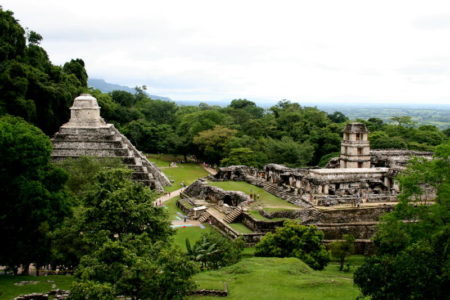PALENQUE, Chiapas — The United States will fund restoration work at a Mayan archaeological site in Palenque, Chiapas, to the tune of USD $500,000.
The National Institute of Anthropology and History (INAH) and the U.S. embassy announced the conservation and restoration program last week, according to mexiconewsdaily.com.
Ambassador Roberta Jacobson said the money would be delivered over the course of the next three years through the U.S. Ambassador’s Fund for Cultural Preservation.
The funding will focus on two important areas located at the Palenque site: the tomb of Pakal and part of an architectural complex known as El Palacio (The Palace).
INAH director general Diego Prieto Hernández said the project will repair deterioration in the sarcophagus of Pakal and structures of the El Palacio. INAH researchers will carry out the work, addressing humidity, water filtration and temperature change, which have caused severe damage to the walls of the crypt.
As well as repairing structural elements, the project will restore nine plaster figures surrounding the crypt, which represent the Lords of the Night, guardians of the ruler. Pakal governed from 615 to 683 BC.
Ambassador Jacobson said she felt a close relationship with the Mayan city, which captivated her interest when she was younger. It also formed part of her doctoral thesis, which focused on the looting of Mayan tombs.
She added that the Ambassador’s Fund was proud to donate the money to INAH, a move she asserted will demonstrate that the relation between both nations is now stronger than ever in many areas, such as education and culture.
Several factors have negatively affected the archaeological site since its discovery in 1952, including shifting weather patterns, the natural deterioration of the construction materials and the deforestation of the surrounding area.
Palenque was named an archaeological monument zone by the federal government in 1981, and recognized as a world heritage site by UNESCO in 1987. Pakal’s tomb has been closed to the public for more than 10 years to avoid further deterioration.
Sources: mexiconewsdaily.com, Milenio (sp), El Universal (sp)


